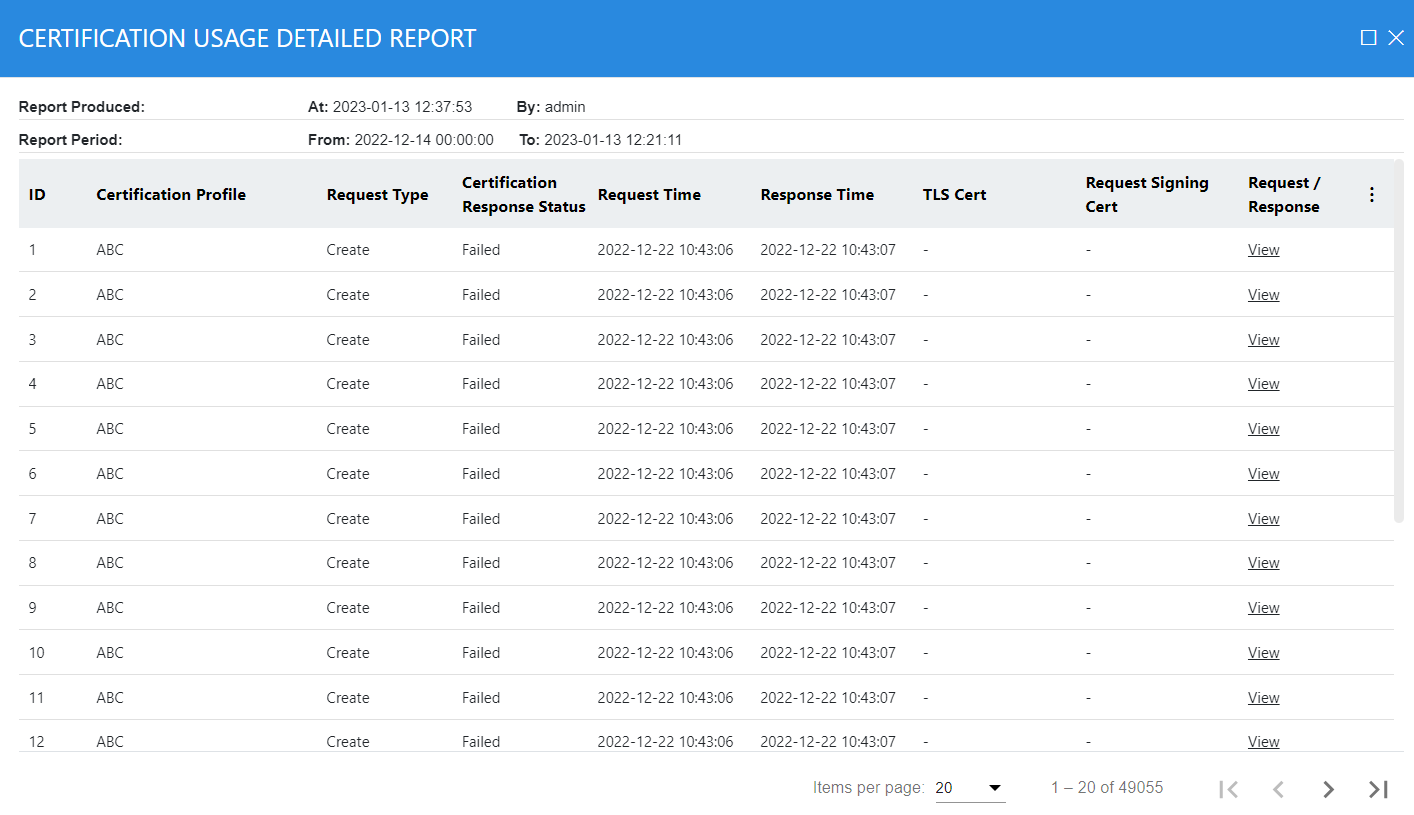Usage Report
This type of report is useful for reviewing which clients are making request to your service and which profiles are being used by these clients. You can also view the detailed report of each client’s activity within a particular date range:

The configuration items are as follows:
|
Items |
Description |
|
From |
Select the start date for the date range you want to report on. |
|
To |
Select the end date for the date range you want to report on. |
|
Certification Profile |
Select a particular certification profile for which you want to see the statistics otherwise choose ALL option. |
|
Attribute Profile |
Select a particular attribute profile for which you want to see the statistics otherwise choose ALL option. |
|
Clients that made Certification Requests |
Enter a number for how many clients you want to report on. Clients are listed based on the number of transactions they conducted during that period. This helps to track frequent users. Leave it empty or enter ‘0’ value to see report for all registered clients. |
|
Client ID |
Lists the name of the client that sent the request. |
|
Successful Transaction |
Lists the number of successful transaction for this client. |
|
Failed Transaction |
Lists the number of failed transactions for this client. |
|
Total Transactions |
Lists total number of transactions for this client. |
|
Export Report |
The generated report can be exported in zipped CSV format. |
The details of the transactions can also be viewed by clicking on Detail Report >> View link. This shows the following screen on a per Client basis:

Each transaction conducted by the Client is itemised separately in this table. You can even view the original request/response XML transaction from this view. Finally you can also export the detail client report as a zipped CSV file.
|
|
Whenever a multilingual CSV file is downloaded from management reporting, and the file is opened in the MS Excel format, there are chances that the translation in the multilingual may not appear correctly. This is because MS Excel default encoding does not process UTF-8 characters correctly when CSV is opened directly in Excel. In order to tackle this issue, follow the instructions below:
|
See also

